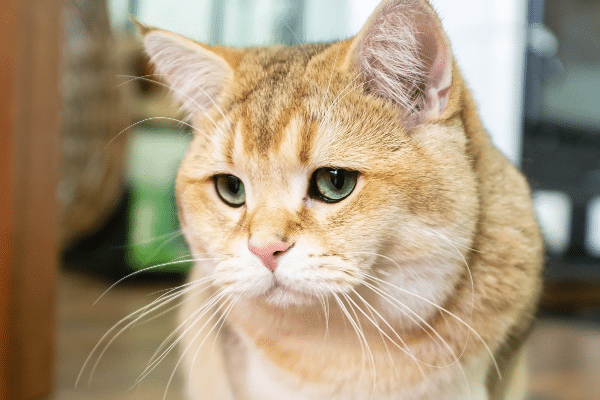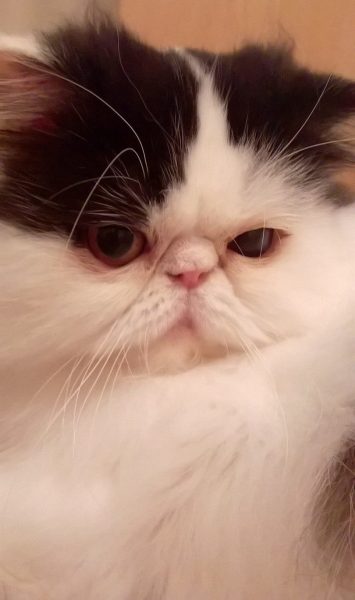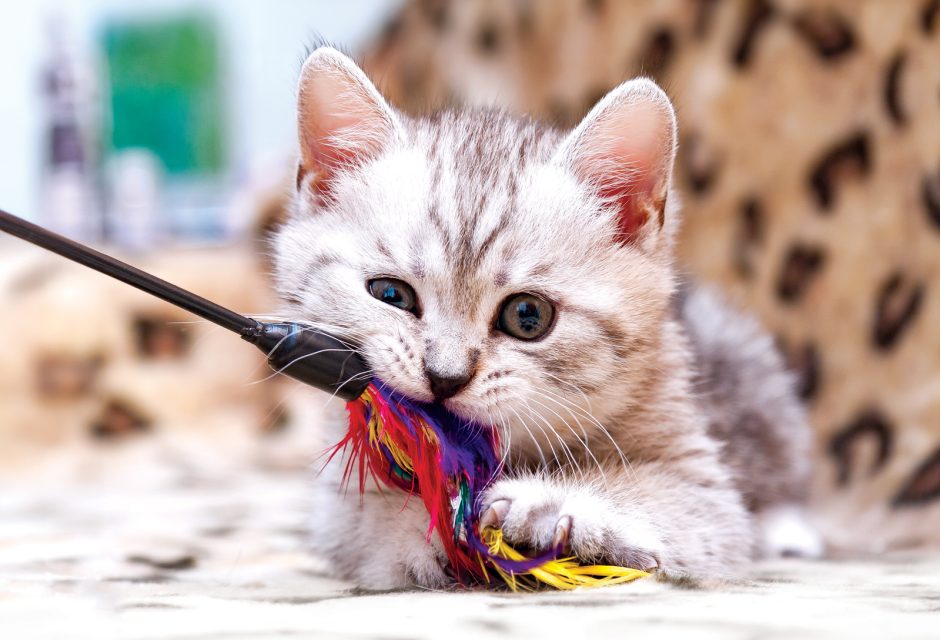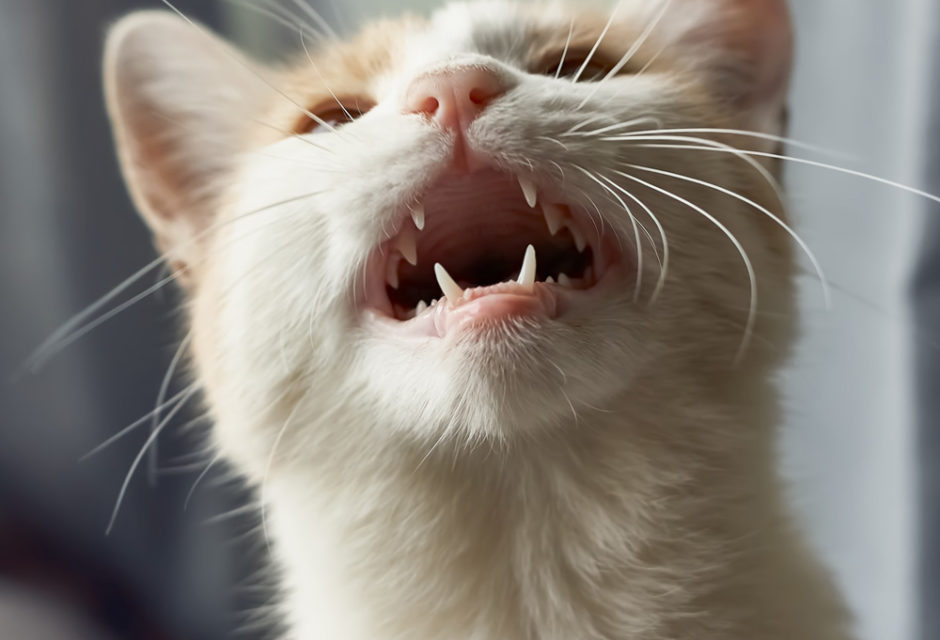
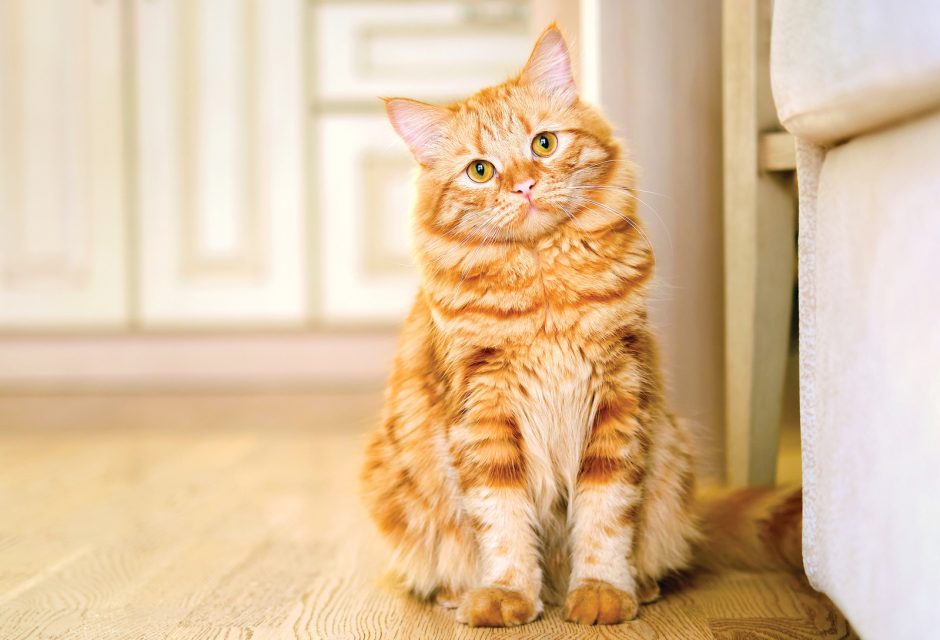
Olfactory Enrichment for Cats
Fun ways to enrich your cat’s life by considering their incredible sense of smell!
Our cats use scent in ways that humans can hardly imagine. Cats have many more odour receptors in their noses than we do (meaning they have a much better sense of smell). They use their powerful noses to learn about things in their environment, as well as for social (scent) communication with other cats.
We can take advantage of that fantastic sense of smell to enrich our cats’ lives. Here are three great ways to expand your cat’s horizons through their nose.
#1. Eufloria: Plants that Cats Love

Photo South12th/Bigstock
Most people know about catnip, a plant in the mint family known for the euphoric response it elicits in our feline friends. But cats can enjoy several other plants too. The most effective alternatives to catnip include silver vine, Tatarian honeysuckle, and valerian root, but cats have also been known to respond to the scent of green olives (pits removed for safety please!), palo santo, and cat thyme.
Cats respond to different chemicals in these plants, including nepetalactone (catnip), nepetalactol (silver vine), and actinidia polygamy (silvervine and valerian). These chemicals activate the pleasure system in the brain, so they can provide a positive experience for kitty.
The “catnip response” is genetic. Around 60 percent of cats show this response, which typically develops when cats are around six months old.
Why Do Cats Have a Catnip Response?
Until recently, the potential benefits of the catnip response were not well understood. But a 2021 study from Iwate University in Japan found that, at least in the case of silver vine, there are reasons to love it! Nepalactol from silver vine was successful in both repelling mosquitoes and preventing cats who rubbed in silver vine from being bitten by mosquitoes! The “catnip response” is both pleasurable and potentially protective as mosquitoes can be a source of parasites for cats.
Catnip: No Reason Not to Indulge
Another study of silver vine from the same research team found that it is safe to use. Cats did not show any signs of “addiction” and there were no negative physical effects from regular use. So, there’s no reason not to indulge your kitty in this fun habit!
Quick Tips for Providing Olfactory Enrichment For Your Cats:
- Know your cat! Some cats enjoy all forms of cat-safe plants, while others are more discriminating. So don’t give up if your cat doesn’t respond to catnip—a 2017 study, published in the journal BMC Veterinary Research found that even more cats had a positive response to silver vine.
- Don’t force it. Offer your cat scent enrichment by placing it somewhere your cat is comfortable, for example on the floor, or on a towel or dish. Allow your cat to approach it and investigate as they wish.
- Experiment: Some cats prefer fresh plants to dried. Some plants also come in powders or as twigs. Try different forms to see what your cat likes best.
- Watch your cat’s behaviour: When enjoying olfactory enrichment, a lot of cats show behaviours that indicate pleasure, such as rubbing and rolling. A few cats may become excited and may bite and scratch if handled while enjoying catnip. They may even chase other cats. Leave your cat alone when they are indulging, and if necessary, separate cats in the multi-cat household so everyone can enjoy their herb in peace.
- Clean up: Put away catnip/scent toys when not in use; cats’ responses decrease when toys/plants are left out all the time.
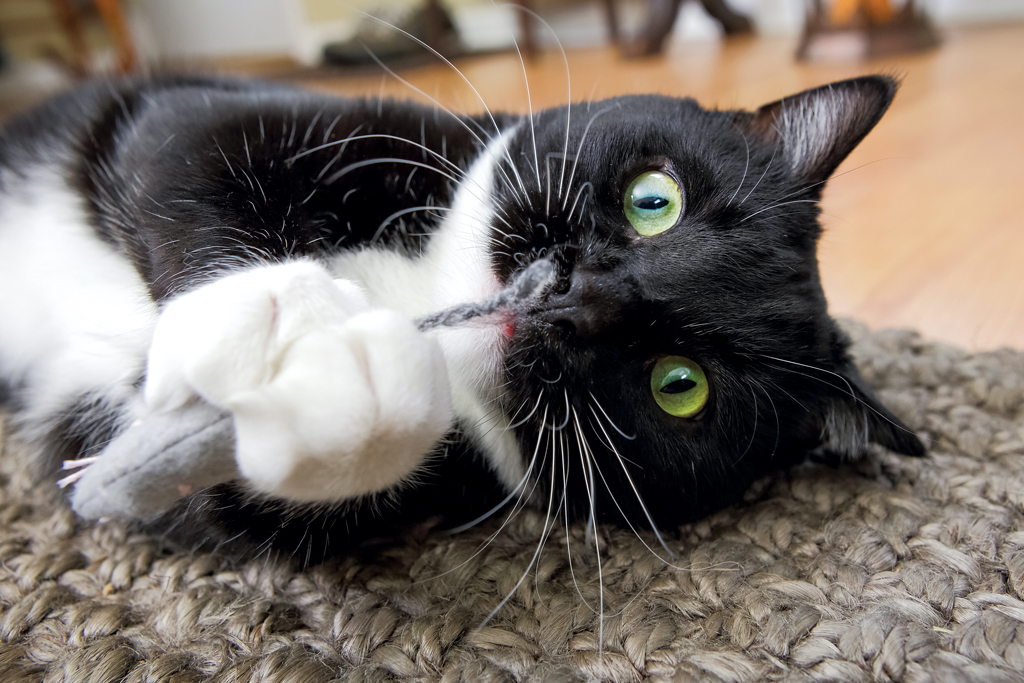
Photo soupstock/Bigstock
#2. Nosework For Cats: No Catnip Response Required!
Does your cat like food? Then they can enjoy nosework! Nosework is any activity that allows your cat to utilize their sense of smell to explore their environment.
You may have heard of dogs who are trained to use their noses to find things for humans, such as drugs (detection dogs) or even rare species (conservation dogs). Many dog guardians use nosework “games” to enrich their dogs’ lives. The good news is that cat parents can do so too!
Hanna Fushihara is a dog and cat trainer, and founder of the website Nosework Cats, where she offers online courses about nosework for cats. I asked her how readers can try these fun games with their cats, and why they should.
Fushihara says it’s all about gradually increasing your cat’s food-finding skill level. “We can go from something simple and basic to creating more challenging scent puzzles for them,” she says. “It’s something that your cat is naturally good at, and all you have to do is set up a scenario that your cat can have fun in.” Fushihara has worked with all types of kitties, from indoor cats, to cats enjoying the outdoors on a harness, to shelter cats, and even kitties with disabilities. “Any cat can do this!” she enthuses.
Fushihara suggests an easy game to get started: “In a relatively small room, with your cat initially out of view, hide a few treats in different areas. Sit back and watch your cat figure it out! When is it that you think your cat is using their nose rather than their eyes?”
This is a great opportunity to observe your cat’s behaviour, and appreciate how differently they experience their environment than we do: could YOU find those treats by smell alone? (Note: You can easily adapt this game for wet food or lickables by placing small yogurt lids around the room with a small dab of food on each).
Nosework can encourage your cat to explore their environment, which can be both entertaining and a confidence-booster. Fushihara encourages cat guardians not to get too focused on the endgame but to have fun with their cat. “If people think about how when they’re playing hide and seek, it’s not when you find the person that’s supposed to be fun. It’s looking for them…is there a person in this room, or underneath this thing? For cats and dogs, the searching for the treat, the journey should be the fun part,” she says.
You can learn more about Fushihara’s Nosework Cats courses on her social media (@noseworkcats on Instagram and YouTube) and at noseworkcats.com.
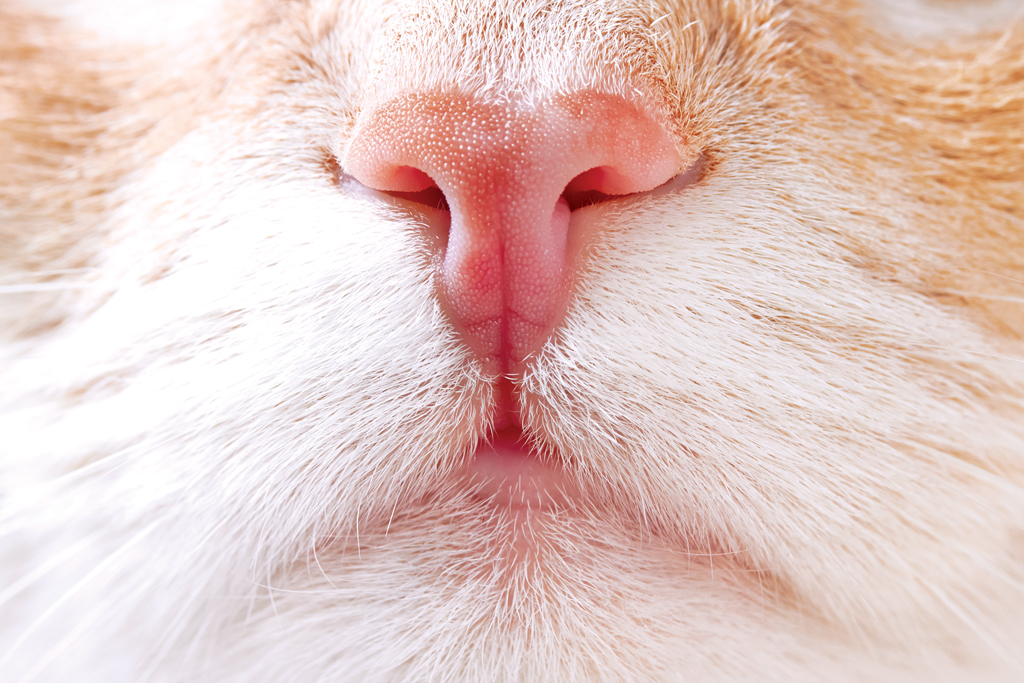
Photo Samsonovs/Bigstock
#3. Scent Distribution: Promoting this Natural Cat Behaviour
Cats have several scent glands on their cheeks, forehead, chin, and paws. When your cat rubs on objects or scratches, they are depositing their scent. Although we cannot smell these scents, cats can. These scent marks are an important way that your cat claims their territory—much like we like to decorate our walls or desks.
We can make our cat feel more at home by honouring this natural need to scent mark. Here’s how:
Avoid overpowering artificial scents or essential oils or incense. Not only can they be intense to our cat’s sensitive noses, but they can cover up the traces of their own scent that they’ve worked so hard to deposit on bedding, doorways, corners—even the edges of our laptops!
Give your cat plenty of scratching options. Give your cat multiple places and ways to scratch, including vertically and horizontally. Research suggests that sisal and cardboard are preferred scratching textures for most cats. Make sure all scratching posts are tall, sturdy and in prominent locations—cats often like to scratch near where they eat, rest, or greet you. Your furniture will thank you, too!

Loving our cats means respecting their unique and exquisite sense of smell. By encouraging these natural, healthy, and fun scent-related behaviours, we help our cats express their cat-ness in an often-overlooked way. At the same time, we can develop a deeper appreciation of the things that their noses can do that ours cannot!
This article originally appeared in the award-winning Modern Cat magazine. Subscribe today!
Join the newsletter and never miss out on cat content again!
"*" indicates required fields
By clicking the arrow, you agree to our web Terms of Use and Privacy & Cookie Policy. Easy unsubscribe links are provided in every email.





